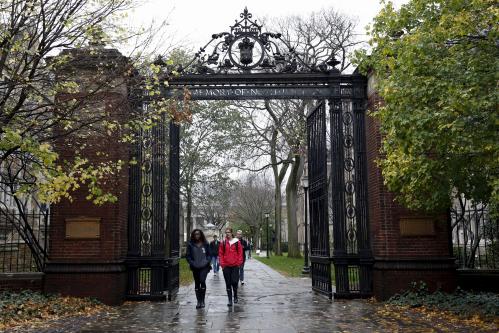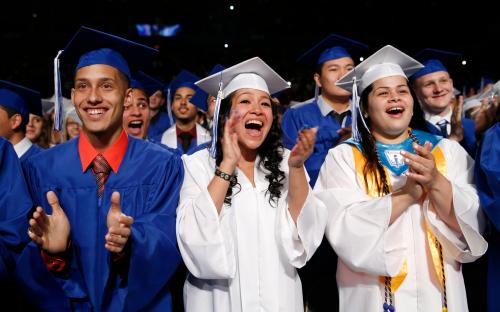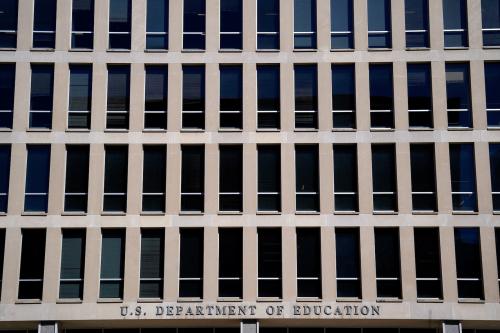This article responds to the New York Times article published on September 7, 2019, “End Legacy College Admissions.“
Mark your calendars: today could turn out to be an important date in the history of U.S. higher education. For the first time in its 168-year history, the New York Times Editorial Board has offered an opinion on the practice of legacy preferences in college admissions. The Board rightly lambasts this outdated hereditary principle:
“Preferential treatment for legacy admissions is anti-meritocratic, inhibits social mobility and helps perpetuate a de facto class system. In short, it is an engine of inequity. Little wonder that it is unpopular with most Americans, yet supported by the affluent who both oversee the college admissions process and are its primary beneficiaries.”
It may surprise you to learn that the Board has avoided the subject until now (it certainly surprised me). But even the most liberal elite institutions struggle to condemn even the most outrageously illiberal practices, when they benefit the elite.
So all credit to the Board. If legacy preferences go, the children of more than a few Times readers may see a slight reduction in their chances of admission to their parents’ alma mater. Sometimes there is a price to pay for justice. And as my former colleagues Dayna Bowen Matthew put it in a different context: “equality always feels like a loss to the people who were previously unfairly ahead”.
Legacy preferences amount to “Affirmative Action for the Rich”, as the title of Richard Kahlenberg’s Brookings Press book has it. The rich know it, too: two in five affluent Americans, those earning more than $140,000 a year, support the idea of colleges giving preference to legacies, compared to 20% of those making less than $50,000, according to a Suffolk University/USA Today poll. (One in five of the richer group also think colleges should give preference to the children of big donors, compared to just 6% of those on low incomes).
The timing of the Times’s editorial is auspicious. The work of Harvard economist Raj Chetty and his colleagues at Opportunity Insights has vividly shown the extent to which elite colleges and universities cater to the children of the rich. Elite college admissions are also under the spotlight because of the illegal activities uncovered in the “Operation Varsity Blues” scandal. These have helped illuminate the many ways the system is legally rigged in favor of children of the affluent and well-educated, of which legacy preferences is just one.
The United States is now the only nation in the world where colleges routinely use legacy status as a factor in admissions. The remaining vestiges of the practice at Oxford and Cambridge Universities, for example, were swept away in the middle of the 20th century. More recently, the president of Trinity College, Oxford, explained that in modern, democratic society, schools must deny special consideration even to the children of major donors: “Parentage, like patronage, no doubt conclusive in 18th-century Oxford admissions, is irrelevant in those of the 21st century.”
Arguments in favor of legacy preferences shrivel under close examination. There is no good evidence, for example, that they influence alumni giving (hardly a good argument in any case given the wealth of most of the institutions in question). A study of the top 100 national universities (as ranked by U.S. News & World Report), found no connection between giving and alumni preferences.
Nor can it be said that taking account of legacy status gives merely an “ever so slight tip”, as claimed by William Fitzsimmons, dean of admissions at Harvard College. The acceptance rate for legacy applicants at Harvard, Yale, Princeton, Georgetown and Stanford is between two and three times higher than the general admission rate. Of course, the children of alums are likely to be towards the top end of the applicant pool, it is hard to know precisely how much of a bump they get – and the institutions in question generally won’t share their data.
Some scholars have managed to dig into the question a little, however. The Times cites a 2011 study from Harvard’s Michael Hurwitz showing that at 30 of the nation’s most selective schools, primary legacy students (those with a parent who attended the school, rather than, say, a grandparent or aunt) “had a 45 percent higher probability compared with their peers, all other things being equal.” An older study found that being a legacy applicant had the same effect as adding 160 SAT points on the old scale up to 1600 to a student’s application.
Another argument is that even if legacy preferences are unfair, this is a microscopic issue by comparison to the vast inequalities in society. This at least has the merit of being true. But it is still a very bad argument, as the student editors of Harvard’s Crimson pointed out in 2015:
“Harvard’s legacy preference is, in the simplest terms, wrong. It takes opportunities from those with less and turns them over to those who have more…Without legacy preference, things will not be perfect, and they may not even be close. But just because something will not be perfect does not mean we should not strive to make better.”
The last argument trotted out by defenders of the status quo is something about “ethos” or “tradition” or “community”. Take the line offered by Larry Summers, then President of Harvard, who said: “Legacy admissions are integral to the kind of community that any private educational institution is.” These kinds of arguments steer dangerously close to Burkean ideas about helping the “great families” who are destined to rule. They are rightlyeviscerated by the Times:
“Another argument that college presidents make is that multigenerational enrollment helps improve the institutional ethos, tightening the bonds of community for those lucky enough to be admitted. That may be so, but it comes at a high cost in unfairness. College admission is a zero-sum proposition — for every legacy admitted, another promising applicant is denied the career and economic opportunity that a top degree can provide.”
The idea that a hereditary principle should operate in the selection of students for our most elite colleges is absurd. Legacy preferences are an embarrassment to the institutions who apply them, and by extension to the nation as a whole. As the Times Editorial Board points out, there are various policy levers that could be used to discourage their use, from modest demands for data sharing up to the withdrawal of all federal funds from offending institutions. On their list is a suggestion from me and Aaron Klein to use the new endowment tax as an incentive for colleges to abandon the practice, as part of a broader push towards more inclusive admissions.
Ending legacies will be an easier process if the institutions act together rather than one by one. As the Editorial concludes:
“Whatever the mechanism, it makes sense for a group of competitor schools to take the leap together, a mutual stand-down. Doing so would be in the best traditions of American higher education, which for decades has worked to extend opportunity to generations of poor and minority students. Inaction by the academy, on the other hand, risks fueling a growing public sense that higher education is part of the crisis of the American establishment”.
Amen. I hope is that the strong position taken by the Times will help to stiffen the spines of reformers in our most elite institutions. Legacy preferences are coming to an end. The only questions are when, and how.
The Brookings Institution is committed to quality, independence, and impact.
We are supported by a diverse array of funders. In line with our values and policies, each Brookings publication represents the sole views of its author(s).







Commentary
Op-edThe Times takes on college legacy preferences: Let’s hope it is the knock-out punch
September 7, 2019